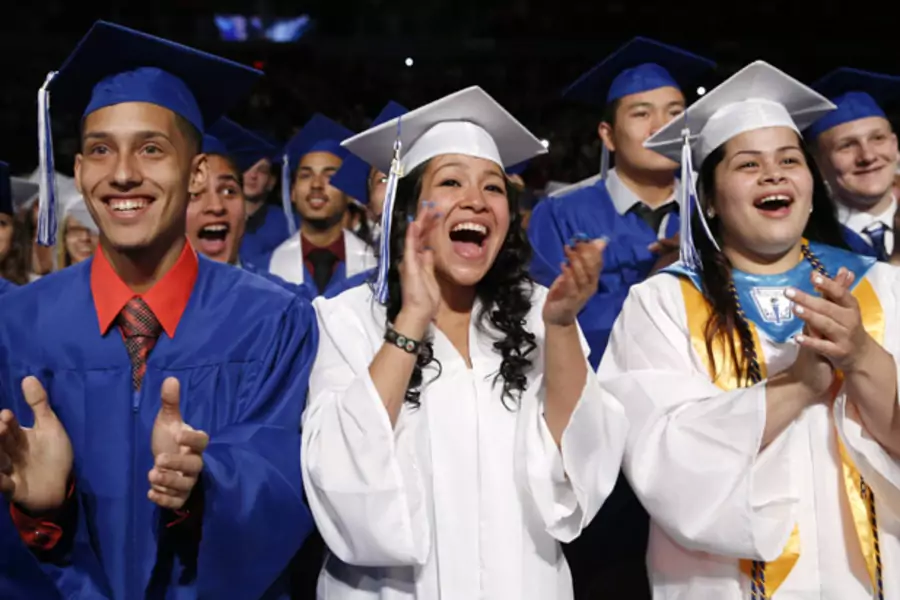How to Get More Kids Into and Through College

More on:
This is a guest post by Amir Farokhi, CFR Term Member and COO, College Advising Corps.
Imagine a leaking pipe is flooding your house. What would you do? You would patch it immediately. Yet, when it comes to America’s pipeline of talent, we do ourselves no such favors, allowing too many gifted high school students to give up on higher education.
Even though there are many fractures in the pre-K to college pipeline, among the most glaring is the number of qualified students who do not pursue or complete higher education. Recent Census Bureau data show that among Americans ages 25-64, only 31 percent have a bachelor’s degree or higher. The very foundation of our economic success--our human capital--is no longer an advantage. While baby boomers helped America lead the world in education attainment, Americans aged 25-34 today rank just 10th in high school educational attainment and 14th in college educational attainment. Moreover, our college drop-out rates are significantly higher than the global leaders like Korea and Denmark.
The economic impact of an undereducated populace on our economy is staggering: hundreds of billions of dollars. Although a college degree is not necessary for every job in America, demand for educated workers far outstrips supply. Moreover, educational attainment directly impacts individual and national economic success. Those with at least a bachelor’s degree make more money per week and over their lifetimes than those without one.
This individual benefit accrues to the national economy through increased productivity, after-tax income, and tax revenues. According to the Organization for Economic Cooperation and Development (OECD), the benefit in today's dollars after costs and discounting for future inflation is over $380,000 for U.S. men and nearly $240,000 for U.S. women. Even after factoring in the cost to taxpayers of state universities, low-interest college loans and other subsidies, OECD’s Director of Education Andreas Schleicher says that “taxpayers get $200,000 more out of every graduate than what they invested.”
Make College Access and Completion a National Priority
Fixing the leak in our education and talent pipeline should be a national priority. The best solutions come at the intersection of government, business, and civil society, and include the following:
1. Increase college access support in high schools
The average American high school student receives a paltry 20 minutes of guidance per year, with only one college counselor for every 463 students. The numbers in California are even more abysmal, with nearly 1,000 students per counselor. For low-income and underrepresented students especially, this lack of support leaves them thinking college is not a possibility.
If school budgets are not going to fund more college advising support, the social sector--backed by philanthropy, government, and business--must fill the gap. There are already many such efforts across the country. Some use college students to volunteer to help high school students. Others use a service model and place recent college graduates in high schools as full-time college advisers. Innovative experiments to provide online, video, and remote support are also underway. Whatever the approach, America must make it easy, transparent, and supportive for every student to receive expert college advising guidance.
2. Get higher ed to actively recruit low-income students
It is not enough for colleges and universities to hope they get applications from low-income and underrepresented students. Higher education needs to actively encourage these students to apply by placing admissions officers in rural towns, immigrant enclaves, and poor, urban neighborhoods. This also means investing in financial aid for these students and ensuring that they get the support to succeed once in school. Arizona State University and Georgia State University have done this to remarkable effect using real-time student progress tracking and near-instant academic and financial counseling.
3. Reward states that prioritize college access support
If we want to see universities and states make college access a higher priority, the federal government should tie its education funding and university research grants to college access benchmarks, which include the percentage of low-income and first generation students that apply to two- and four-year universities, and the percentage that matriculate and complete college. Higher education institutions should be judged based on the number of low-income and first-generation college students that apply to, matriculate, and receive a degree from their institutions, and then compared against peer institutions with similar size, focus, and endowment.
Among the best in the country at attracting and graduating high numbers of low-income students are UC-Riverside, UC-Davis, UNC-Charlotte, and the University of South Florida. UC-Riverside, which serves more Pell-eligible students than the entire Ivy League combined, graduates them at the same rate as high-income students. This should be encouraged and rewarded.
Our leaking talent pipeline casts a shadow over America’s future economic health. Luckily, the fixes are not complex and are relatively easy to implement.
More on:
 Online Store
Online Store